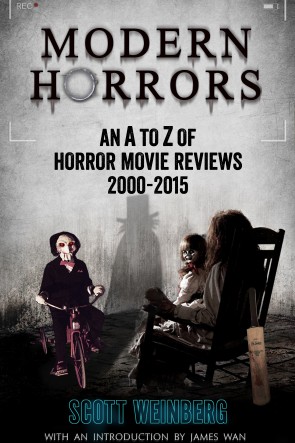Review: MALATESTA’S CARNIVAL OF BLOOD (1973){0}
“I don’t understand anything that’s going on around here, Kit. I feel like a fly caught in a spider web.”
Vena (Janine Carazo) and her parents have just moved in to a run-down amusement park. There ostensibly to set up a shooting gallery in an entertainment sector improbably described by its oleaginous ‘business manager’ Mr Blood (Jerome Dempsey) as a ‘goldmine’, the Norris family in fact comes with a hidden agenda. For they are searching for Vena’s missing brother Lucky, or at least for revenge upon whoever may have harmed him. Yet in this hermetic world, where all the workers “seem a little odd”, and where health and safety are left outside the electrified fence (“Accidents happen around the carnival,” confides Blood), there are secrets and mysteries aplenty. Visitors and newcomers disappear, the owner Malatesta (Daniel Dietrich) never seems to be around, a rhyming dwarf named Bobo (Fantasy Island‘s Hervé Villechaize) keeps popping up out of nowhere, and deep in the dark spaces beneath the fairground attractions, an army of pallid freaks watches silent horror movies. Waiting for her boyfriend Johnny (Paul Townsend) to arrive, Vena spends the evenings with new Tunnel of Love operator Kit (Chris Thomas) trying to get to the bottom of this strange place – but finds herself increasingly trapped in a nightmare.
From the moment, in the opening scene of Malatesta’s Carnival of Blood, that fortune teller Sonja (a cross-dressing Lenny Baker) pulls a Death card from her tarot deck, Vena’s initiation into the carnival is marked as both transgressive and doom-laden – and yet there is also the idea that she has at last arrived where she truly belongs. Vena’s very name – from the Latin for ‘vein’ – fits Blood’s like a glove, and Blood’s vampiric nature is matched by the zombie-like behaviour of the troglodytes, and the lycanthropic baying at the moon pf Malatesta, who also expressly styles himself as ‘Quasimodo’ and a Chaney-esque “man of 1000 faces.” Indeed, this circus of freaks models itself on the Universal monsters of black-and-white horror cinema, much as the carnival’s main office is festooned with posters from Dracula and Frankenstein (both 1931), and The Hunchback of Notre Dame (1923) and The Phantom of the Opera (1925) are projected in the caverns below.
Yet these old creatures have been refashioned for new times as seductive dangers, not unlike the carnival attractions, that lure in countercultural youngsters – like school dropout Kit and dope-smoking Lucky (Sebastian Stuart) – to be assimilated, in one way or another, into their outcast ranks. If Vena’s parents – pistol-toting Frank (Paul Hostetler) and the curler-wearing wife whom he insistently addresses as ‘Mrs Norris’ – embody the patriarchal values of their generation, Vena herself keeps sneaking out at night, in defiance of daddy’s express instructions, and so herself is teen rebellion incarnate. No wonder then that Malatesta’s Carnival of Blood should trace – and celebrate – Vena’s (not entirely voluntary) transgression to the carnival’s wild side, and her descent to the underground (in this most carnivalesque of underground movies). For as the Norrises search first for Lucky and then for Vena, as Vena searches for Kit, and as Johnny searches for Vena, the film dramatises a lost generation of drugged-up, dispossessed dropouts and monstrous, Manson-esque misfits, and remains somewhat ambivalent as to whether they are its heroes or its villains.
The film too was thought lost for three decades, until a single copy, discovered in an attic, was remastered to DVD in the 2000s (this is the first time it has been released on Blu-ray). A truly independent production, shot far from Hollywood in Willow Grove, Pennsylvania, Malatesta’s Carnival of Blood is a low budget freak show, unfolding its narrative of entrapment in deliriously disorienting style. Apart from Dempsey’s funny, creepy turn as Blood, the best asset here is the creaky fairground location, transformed into a labyrinth by the film’s twinned rejection of spatial continuity and adoption of dream logic. Full of references to drugs and drug-taking, the film (whose titular ‘Malatesta’ is Italian for ‘bad head’) seems designed to give the heads in the audience the kind of bad trip associated with a rocky rollercoaster (the one in the film leaves its rider literally headless). It’s a psychedelic spookfest, unsettling viewers as much with its leaps of reason as with its rogues’ gallery of eccentric antiheroes. The nearest antecedents are probably Herk Harvey’s Carnival of Souls (1962) and Ray Dennis Steckler’s The Incredibly Strange Creatures Who Stopped Living and Became Mixed-Up Zombies (1963) – but Christopher Freeth, who like Harvey only ever directed one film, has crafted a strange singularity existing in its own twilight zone.
★★★
– Anton Bitel
Malatesta’s Carnival of Blood is released on 22 February as part of Arrow Films’ dual-format three-film package American Horror Project Volume 1, alongside The Premonition and The Witch Who Came From the Sea.








